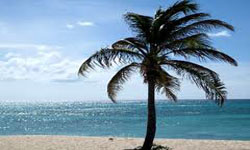|
|
The Daytona Beach
 area has a humid subtropical climate. There are basically two seasons; the hot and wet season (late May through October) and the warm and dry season (November through April). This region of Florida has nearly ideal temperatures with low humidity October through April, and hot and humid conditions May through September. Between December and February, all of Florida is relatively dry and sunny. On average, there are 24 days of each month in winter that are dry with about 8 hours of sunshine per day. Winter nights are usually cool, with only 6 frosts per year on average. No snow on the ground has ever been reported in the Daytona Beach area in the last 109 years. In summer, the Bermuda High brings hot, unstable tropical air from the Bahamas and Gulf of Mexico, which results in rain nearly every day. However, the thundershowers are generally brief and local, and the sun quickly reappears. September usually receives the most rain and January the least. The upper east coast of Florida, including Daytona Beach, is generally a little cooler in summer than further down the coast due to its northern latitude. area has a humid subtropical climate. There are basically two seasons; the hot and wet season (late May through October) and the warm and dry season (November through April). This region of Florida has nearly ideal temperatures with low humidity October through April, and hot and humid conditions May through September. Between December and February, all of Florida is relatively dry and sunny. On average, there are 24 days of each month in winter that are dry with about 8 hours of sunshine per day. Winter nights are usually cool, with only 6 frosts per year on average. No snow on the ground has ever been reported in the Daytona Beach area in the last 109 years. In summer, the Bermuda High brings hot, unstable tropical air from the Bahamas and Gulf of Mexico, which results in rain nearly every day. However, the thundershowers are generally brief and local, and the sun quickly reappears. September usually receives the most rain and January the least. The upper east coast of Florida, including Daytona Beach, is generally a little cooler in summer than further down the coast due to its northern latitude.
The Daytona Beach area has a significantly lower risk for hurricanes than areas of southern Florida. This is because tropical cyclones typically pass offshore once they reach the northern part of the Florida coastline. Since 1950, there has been only one direct hit by a tropical cyclone to the Daytona Beach area, which was Hurricane Donna in 1960. Tornadoes are an even lower risk, much lower than places like the Midwest United States and the Great Plains. However, there have been a few very destructive tornadoes in the Daytona Beach in the last 100 years. The most recent was in 1998, which caused 3 deaths, injured 70 people and cost 31 million dollars in damages.
|
|
|